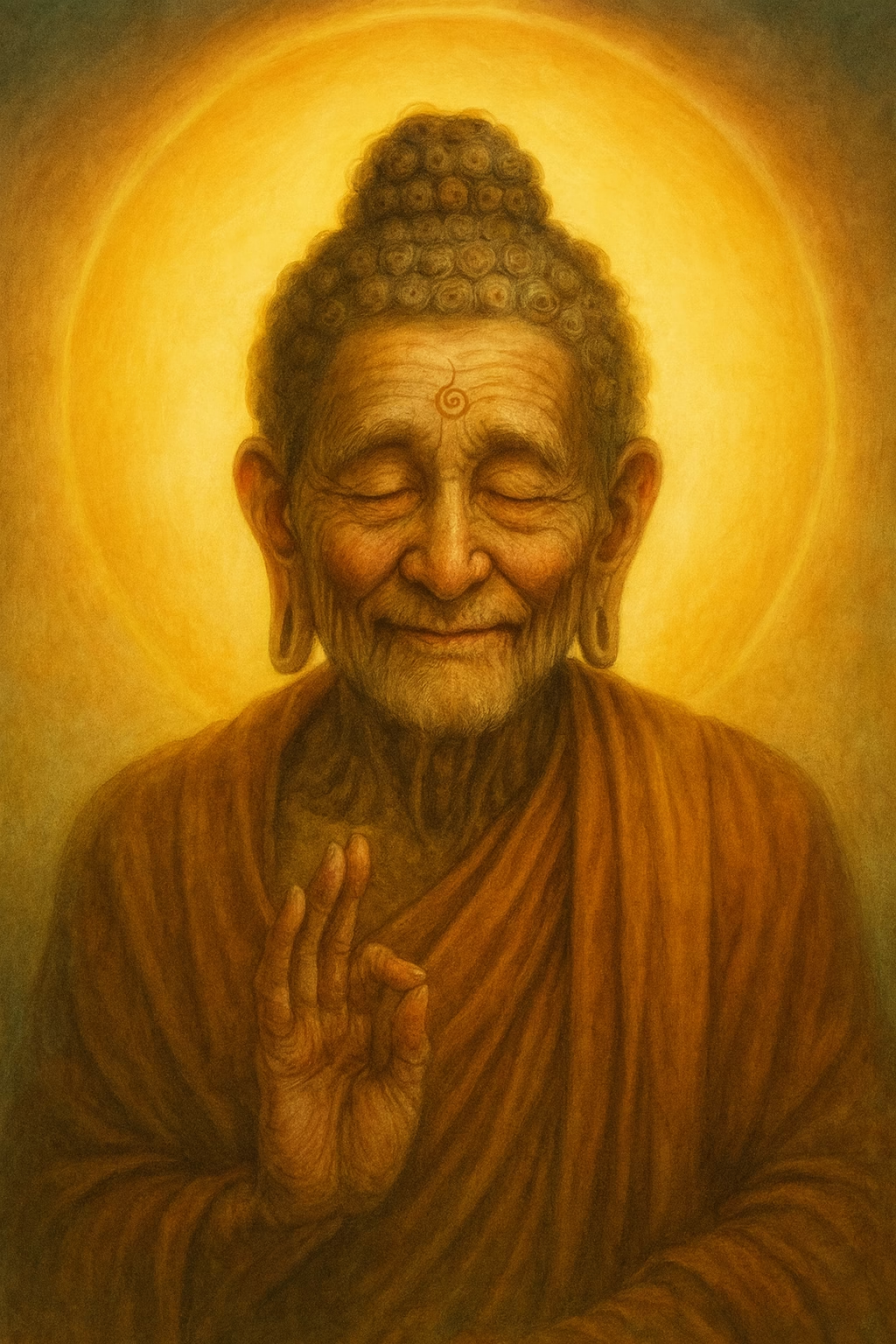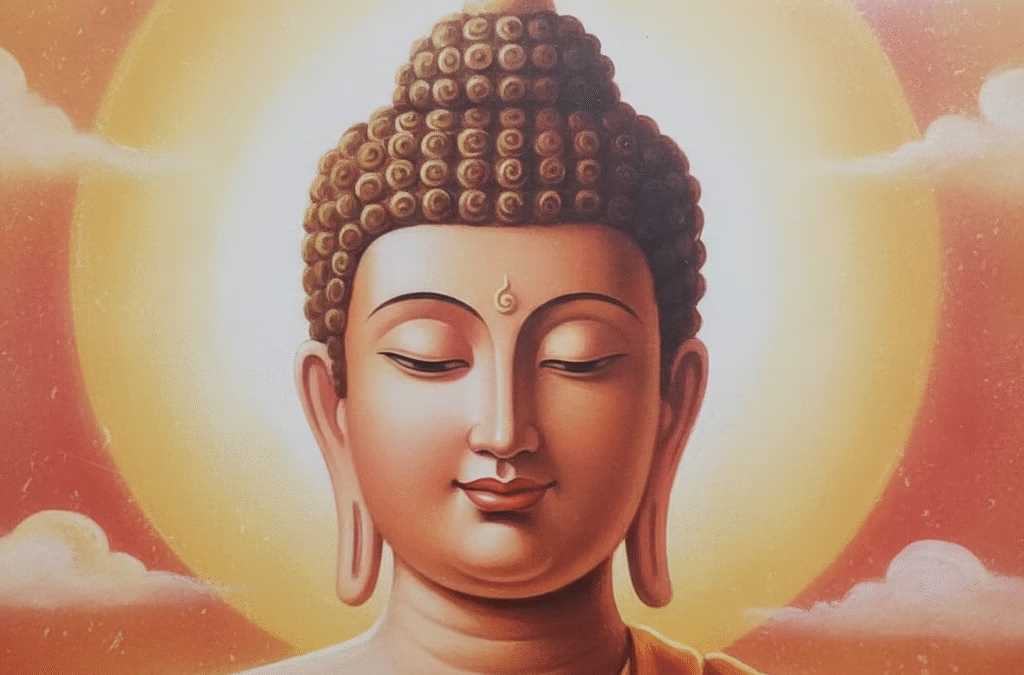The life of Gautama Buddha.
Childhood: Gautama Buddha, known as the Light of Asia, was the founder of Buddhism. He was a great philosopher. He is also known as Shakyamuni and Tathagata. He was born in the Lumbini forest of Nepal on the full moon day of Vaishakh in 583 BC. The Tripitakas and the Jataka tales describe the life and teachings of the Buddha. His father was Shuddhodana and his mother was Mayadevi. The Buddha’s original name was Siddhartha. Shuddhodana belonged to the Sakya clan of Kapilavastu. Mayadevi died just 7 days after Siddhartha was born. Then the Buddha was raised in the ashram of his stepmother Prachapati Gautami. As per tradition, as soon as Siddhartha was born, Shuddhodana called the astrologers. He asked them about his son’s future. When Shuddhodana heard the astrologer’s prediction that his son would either become a great king or a monk who would save the world, he was very surprised. He wanted Siddhartha to become a ruler, so he gave him every comfort and luxury inside the palace. He built palaces for him. His father wanted his son to become a famous emperor, not a monk. Therefore, he was careful not to let anything happen that would hurt his son’s feelings.
Marital life: Since childhood, Siddhartha had an inclination towards spirituality. Thus, Shuddhodana made all arrangements to give him a good education to divert his son’s mind. When Siddhartha turned 16, he was married to a princess known as Yashodhara, Bhadhakachana, Subhadraka, Bimba or Gopa, the daughter of his uncle. He lived a worldly life for 13 years and had a cute child named Rahula.
1) Four events: After spending some time in the luxurious life of the palace, Siddhartha became curious about the outside world. One day, wanting to go outside the palace, he mounted his horse with his servant Channa and went for a walk. On this occasion, he saw the following four great events.
1) A man suffering from old age
2) An old man suffering from a disease
3) A monk and
4) A corpse
These four scenes had a profound effect on Siddhartha’s mind. Old age, disease and death made him feel that the human body was transient. Due to this, he started wanting a solitary life without attachment. He tried to find a solution to this problem.
2) Great Renunciation: Old age, disease and death troubled Siddhartha’s mind. He was bored with the splendor of the palace, the sad life. He tried to wipe away the tears that caused the suffering of all humans and decided to leave the world. At the age of 29, Siddhartha left his stepmother, wife, 6 day old son Rahula, palace, and pleasures one night and went to the forest as a monk. This is called the Great Renunciation.
3) Search for Truth: Siddhartha put on the clothes of a monk and left for the forest. He wandered around with gurus for seven years to find the truth of life and the solution to suffering. This did not help. Siddhartha was a disciple of Arada Kalaman, a famous philosopher of Vaishali, for two years. There too, he did not find the path to enlightenment. Then he went to Rajagriha and sat in meditation with a man named Udraki and attained concentration. Then he performed severe penance in Uruvila near Gaya and became a bone-headed man. However, he did not attain enlightenment. Finally, he bathed in the Niranjana River and accepted the honey drink offered by a maiden named Sujata. From this he gained life force. Feeling relieved, he sat under a palm tree near a village called Uruvala near Bodhgaya and meditated. Finally, on the full moon day of Vaishakh, he attained enlightenment. From then on, Siddhartha became the Buddha. Buddha means enlightenment or one who has attained supreme knowledge. The place where Buddha did penance was called Bodhgaya and the palm tree was called the Bodhi tree.
4) The period of turning the wheel of the Dharma: The Buddha wanted to share the great truth he had discovered with the common people. So, he gave his first sermon in the Deer Park at Sarnath near Varanasi. This incident is called the turning of the wheel of the Dharma. The first five disciples of the Buddha were Kondanna, Eppu, Bhavaji, Mahanama and Annaji. Then the Buddha established the Buddhist Sangha with the help of these five. From then on, the wheel of the Buddha’s Dharma began to roll.
5) Spreading Buddhism: Buddha spent the remaining 45 years of his life preaching from place to place. During this time, he visited Kashi, Sarnath, Rajagriha, Kaushambi, Magadha, Kosala, Anga, Mithila and Kapila. He preached the Dharma to the people who followed him without any discrimination wherever he went. Ananda was his first disciple. Buddha spent 4 months of the year traveling, except for the rainy season, and spent the remaining eight months traveling. Thus, his Dharma spread very quickly. Then, at the age of 80, Buddha attained Parinirvana in Kushinagar, Gorakhpur district of Uttar Pradesh in 503 BC. An interesting fact is that the birth, enlightenment and death of Buddha occurred on the full moon day of Vaishaka. Therefore, Buddhists celebrate his birthday as Buddha Purnima.

Teachings of Gautama Buddha
The teachings of Buddha can be found in the holy scriptures of Buddhism, the Tripitakas, namely the Sutta Pitika, Abhidhamma Pitika and Vinaya Pitika. These are called the three sacred baskets.
1) Four fundamental principles:
- Ahimsa (non-violence).
- Truthfulness (non-lie),
- Non-stealing.
- d) Maintaining chastity/observing celibacy.
2) Four Noble Truths:
- Life is extremely painful. (Birth, old age, disease and death are the sources of suffering)
- Desire is the root cause of suffering.
- If desire is abandoned, one can be free from suffering.
- Following the eightfold path to escape from suffering.
3) The Eightfold Path: By following the Eightfold Path, one can be freed from birth and death. The Eightfold Path as taught by the Buddha is:
1) Right Speech – not speaking falsehood and not insulting others.
2) Right Conduct – abstaining from murder, theft and immoral conduct.
3) Right Livelihood – not causing harm to other living beings.
4) Right Thought – holding good thoughts in the mind.
5) Right Faith – having faith in others.
6) Right Effort – making good efforts.
7) Right Meditation – controlling the mind.
8) Right Mindfulness – being self-aware and self-controlled)
4) The Three Jewels of Buddhism: In Buddhism, the Buddha, the Dharma and the Sangha are the three Three Jewels. Buddha Sharanam Gachami – Dharmam Sharanam Gachami – Sangham Sharanam Gachami
1. Buddham Sharanam Gachchhami :
It means “I take refuge in the Buddha,” — accepting the Buddha as the enlightened teacher and guide who showed the path to liberation.
2. Dhammam Sharanam Gachchhami :
It means “I take refuge in the Dhamma (Dharma),” — the teachings of the Buddha that lead to truth, wisdom, and the end of suffering
3. Sangham Sharanam Gachchhami :
It means “I take refuge in the Sangha,” — the community of monks, nuns, and true followers who live according to the Dhamma and help others on the spiritual path.
In essence: This chant symbolizes a Buddhist’s surrender to wisdom (Buddha), truth (Dhamma), and spiritual community (Sangha) — the three foundations of the Buddhist way of life.
5) Non-violence: Buddha condemned violence. He laid great emphasis on non-violence. He taught that every living being in the world has life and that torturing it is a great sin. He strongly condemned animal sacrifices in Yagna-Yagas. He called upon his followers to abandon the path of violence and live with friendship, love, peace, compassion and harmony.
6) Condemnation of caste system: Buddha condemned the caste system. He said that a person’s worth should be measured by his personality and not by his caste. For this reason, Buddha gave membership to thousands of untouchables in his Sangha.
7) Reincarnation and Karma: Like Mahavira, Buddha also believed in reincarnation and karma. Our past karmas are the reason for the current birth and death of a human being. Therefore, the Buddha taught that if we do good deeds, we can attain salvation.
In Essence
The importance of Gautama Buddha is the cornerstone of peace, equality and morality for humanity. He showed the way to human self-improvement through non-violence, truth, compassion, tolerance and self-control. Buddhist principles that see everyone as equal without discrimination on the basis of caste, religion, gender or wealth are the basic foundations of social justice and human rights. In today’s turbulent, violent and competitive era, the teachings of Buddha are very relevant, as they guide humans towards inner peace, social harmony and environmental protection. Buddha’s message of non-violence and moderation is an eternal light that shows the path of humanity and peace to today’s global society.

